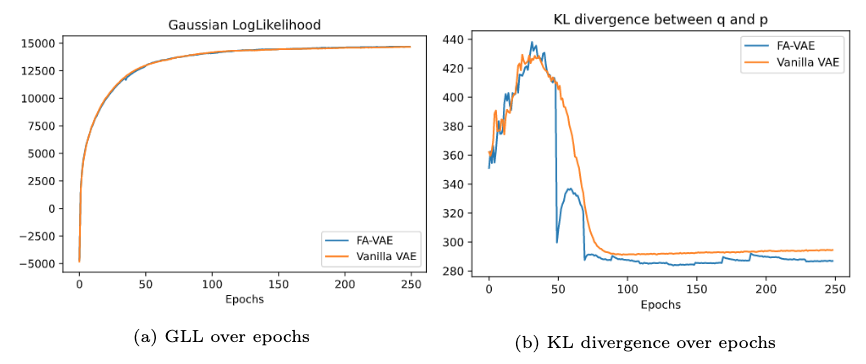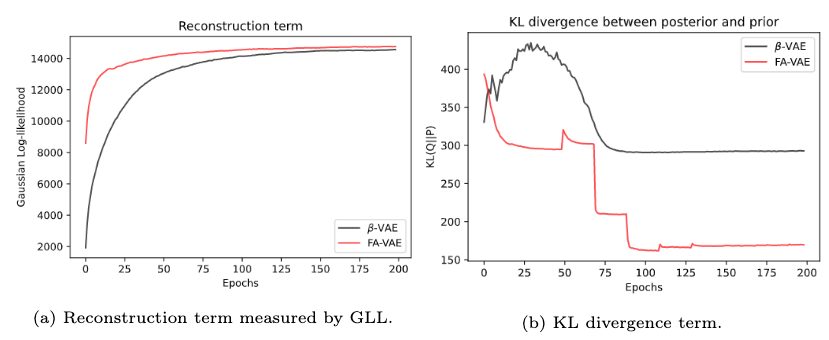by Alejandro Guerrero-López, Carlos Sevilla-Salcedo, Vanessa Gómez-Verdejo and Pablo M. Olmos
This paper has been submitted for publication and the preprint is already available.
We propose a novel method to disentangle private-shared information between heterogeneous views of the same observation. To do so, we propose a factor analysis framework to combine multiple VAEs structures. In that way, we are capable of:
-
Conditioning single VAEs to binary or multilabel targets

Feasibility test: vanilla VAE vs vanilla VAE with FA-VAE approach
-
Combining multiple VAEs to learn and disentangle private-shared information from different m-views

Analysis of private information over CelebA and Cartoon datasets

Analysis of shared information over CelebA and Cartoon datasets

Analysis of private-shared information over CelebA and Cartoon datasets
-
Performing domain adaptation given different representations of the same data by using multiple VAEs:
Domain adaptation performed by FA-VAE Model
Domain adaptation performed by Multi-VAE SOTA model
-
Performing transfer learning between multiple VAEs

Transfer learning approach: $\beta$-VAE trained by its own vs Transfer learning to $\beta$-VAE with FA-VAE approach
Nowadays, real-world databases come in heterogeneous and multiple representations. Therefore, exploiting and disentangling private-shared information between views is an important goal. However, current studies often fuse every representation in a non-linear way where we lose the information understanding. We propose a novel Factor Analysis method based on multiple Variational AutoEncoder architectures (FA-VAE). Concretely, we learn every private representation of a heterogeneous view in a continuous latent space learned by a VAE. Then, we model the shared latent space by projecting every private variable, given by each VAE, to a low-dimensional factor analysis latent space using a linear projection matrix and a zero-mean Gaussian noise. By modifying the prior over each VAE's continuous latent space we connect both private and shared latent variables. Therefore, we propose a unique model that is able, at the same time, to: (i) condition multiple VAEs to binary or multilabel classification tasks, (ii) learn and disentangle the private-shared information from different
$m$ -views, (iii) perform domain adaptation given different representations of the same data, and, (iv) perform transfer learning between multiple VAEs.
All source code used to generate the results and figures in the paper are in the following folders:
condition_a_VAE: contains the code about the first experiment in the paper.domain_adaptation: contains the code about the second experiment in the paper.transfer_learning: contains the code about the third experiment in the paper.
The data used in this study is publicly available. You should create a folder called datasets
and download there CelebA and Cartoon datasets. Due to their size, we do not upload them to
this repo.
You can clone this git repository by running:
git clone https://github.com/aguerrerolopez/FA-VAE
You'll need a working Python environment to run the code.
The recommended way is by using
Anaconda Python distribution.
The required dependencies are specified in the file environment.yml.
We use conda virtual environments to manage the project dependencies in
isolation. Hence, you can install our dependencies without causing conflicts with your
setup.
Run the following command in the repository folder (where environment.yml
is located) to create a separate environment and install all required
dependencies in it:
conda env create -f environment.yml
conda activate vaesshiba

